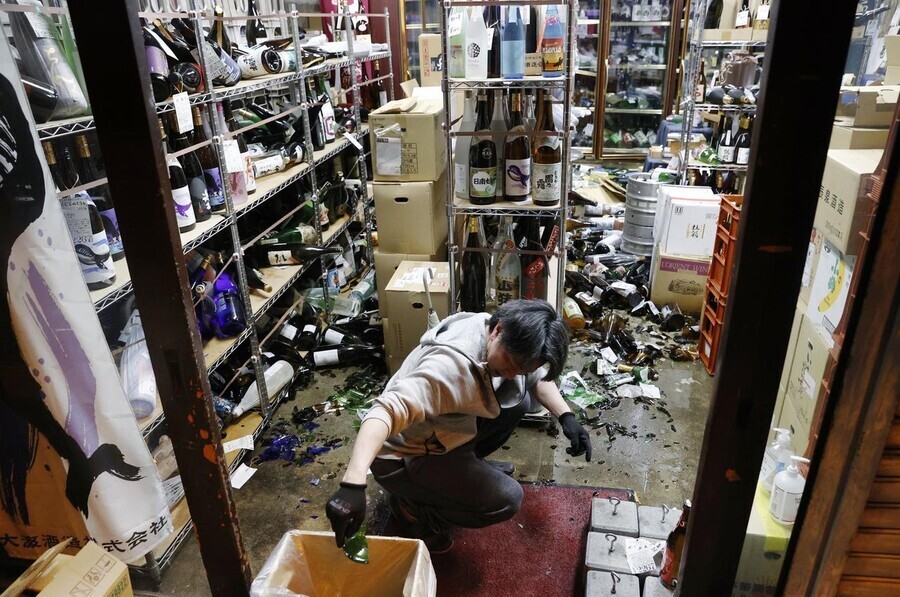
On the night of the 13th, a strong earthquake off the coast of Fukushima Prefecture in Japan caused damage from alcohol bottles in a liquor store in Fukushima. Fukushima/Kyodo Union News
It was found that there have been 14,490 earthquakes of magnitude 1 or higher, which seems to be the aftershock of the Great East Japan Earthquake that occurred in March 2011. ‘Jindo 1’refers to the degree to which you feel a little shaking indoors. “If you look at the data from the Meteorological Agency, there have been 14,490 aftershocks in the 9 years and 11 months after the Great East Japan Earthquake,” and reported on the 16th that “there are more than 350 times in the last year since March 11 of last year.” Among the aftershocks, 80 cases were greater than’seismic intensity 5’, and tsunamis (tsunamis) were also observed 8 times. ‘Jindo 5’refers to a case where a hanging object such as a lamp shakes violently, a bowl or a book may fall, and most people feel fear. When a large-scale earthquake occurs, the balance of power in the surrounding underground becomes unstable, and experts explain that the aftershock occurs in the process of dissolving this. The Japan Meteorological Agency has defined a rectangular area of about 350 km in width and about 600 km in length, extending from the sea off Aomori Prefecture in the northernmost part of the Tohoku region to Chiba Prefecture in the metropolitan area, as the area where the aftershocks of the Great East Japan Earthquake occur. In general, aftershocks gradually decrease after the main earthquake occurs, and the magnitude of earthquakes tends to decrease. Immediately after the Great East Japan Earthquake, there were 5383 aftershocks of “scale 4” or more during the year, but in the year after March 11, 2019, the number decreased to 175. Earthquake experts in Japan predicted that the aftershocks of the Great East Japan Earthquake will continue for about 10 years. Professor Kazunari Ohara of Tokyo University said in an interview with the newspaper, “If the size of the main town is large, such as the Great East Japan Earthquake, the number of aftershocks increases and the period of time increases.” However, some point out that there is a problem with the method of defining all earthquakes in a certain area as aftershocks. This is because earthquakes caused by a separate cause from the Great East Japan Earthquake can also be classified as aftershocks. In an interview, Professor Takashi Furumura of the University of Tokyo Earthquake Research Institute (seismology) said, “The offshore of Fukushima is a region where large earthquakes occur frequently every 40 years. Even if it was not the aftershock of the Great East Japan Earthquake, there is a possibility that this earthquake may have occurred.” You shouldn’t be optimistic.” By Kim So-yeon, staff reporter [email protected]
